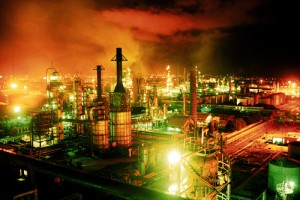The increasing volume of Canadian crudes on the market requires new approaches to upgrading synthetic bitumens (synbit) gas oil properties to a degree similar to the gas oils derived from conventional crudes. The ability to upgrade Canadian crudes such as synbits depends on adherence to Best Practices and process-specific considerations, such as avoiding “sloppy” crude unit operations.
According to Steve Mayo, Global Manager, Hydroprocessing Application Technology at Albemarle Inc., “synbit gas oil is more aromatic than conventional crudes and in many cases also sourer and higher in nitrogen. Both the synthetic portion and the bitumen portion of the synbit influence the properties and reactivity of the feed and, therefore, the conditions and catalyst required to hydrotreat it. Because of this “bipolar” nature of synbit, it is not always easy to judge the severity of hydrotreating required to upgrade, simply based on the feedstock assay.
In general, higher pressure (>50 bar hydrogen partial pressure [725 psi]) and lower LHSV (less than 1.2 per hour [<1.2 hr-1]) hydrotreaters are required to upgrade these gas oils to ULSD quality. In some cases, additional processing such as dewaxing or aromatic saturation may be required to make product of suitable quality. Latest generation catalysts, typically those with higher hydrogenation potential (NiMo or acidic CoMo), are required.”
The profitability of converting these discounted feedstocks into finished products is turning out to be more challenging than expected for certain refiners. For example, the kerosene cut from synthetic crude oils is not making for a good jet fuel. Moreover, many Midwest US refiners are lacking in kerosene hydrotreater capacity, which is why there has been interest in upgrading “underpowered” kerosene HDTs.
However, some engineers are of the opinion that 800 psi kerosene hydrotreaters are “overkill,” as there may be a potential solution at lower pressure with improved catalyst formulations. Within this context, Alan Goelzer, senior consultant at Jacobs Consulting noted: “An 800 psi (55 bar) one-stage kerosene hydrotreater unit can achieve very good conversion of residual two-ring PNA into mono-aromatics, but is challenged vis-à-vis further hydrogenation of mono-aromatics. High mono-aromatics can make the kerosene unacceptable as basestock for low sulfur Jet “A” aviation jet fuel.”
In this situation, Albemarle’s Mayo also commented that “synthetic crude is typically higher in aromatics than conventional oils. In addition, part or all of the components of the synthetic crude may have been previously hydrotreated. This tends to remove and/or hydrogenate more reactive hydrocarbon species and render the resulting oil more difficult to hydrotreat. Specifications related to aromaticity of the jet such as smoke point and naphthalene content are adversely impacted. Some improvement in these properties can be expected from applying latest generation catalysts. However, since aromatics saturation is strongly dependent on hydrogen pressure, “underpowered” kerosene hydrotreaters may struggle to produce acceptable jet quality from synthetic crudes even with the best catalysts. Lower LHSV is a benefit but a higher pressure kerosene hydrotreater is the surest solution to jet quality problems. In retrospect, 50 bar (725 psi) kerosene hydrotreaters are not overkill for units that process a high fraction of synthetic crude.”
Further information from publicly available sources noted that there is a hydrotreating unit (HTU) classification/flange rating break-point roughly at a reactor inlet pressure (RxP, inlet) of 82 bar (1190 psi), so some North American refiners may want to stay below this HTU classification/flange rating break point. However, “other refiners may want to be more ‘future oriented’ and go into the next HTU classification/flange rating range from RxP inlet of 90 to 135 bar (1305 to 1958 psi),” noted Goelzer. “Selection of this next higher HTU classification/flange rating can provide more flexibility in terms of feed mix qualities, greater assurances that residual sulfur (≤ 5.0 wppm at HTU battery limits), and much higher levels of PNA conversion into mono-aromatics,” added Goelzer.
Opinions range as to the feasibility of substituting natural gas condensate with hydrotreated coker naphtha (to serve as diluent). Whether or not this can be done cost-effectively in the near-future as well as long term is still subject to review. According to Albemarle’s Mayo, “hydrotreated coker naphtha is typically low in sulfur, nitrogen and olefins as well as contaminants (silicon, arsenic). As such, it should make a good diluent for bitumen. The economics are questionable, however, as hydrotreated coker naphtha is a product with an end market. The economics of blending would have to overcome the margin from selling the naphtha directly.”








Leave a Reply
You must be logged in to post a comment.